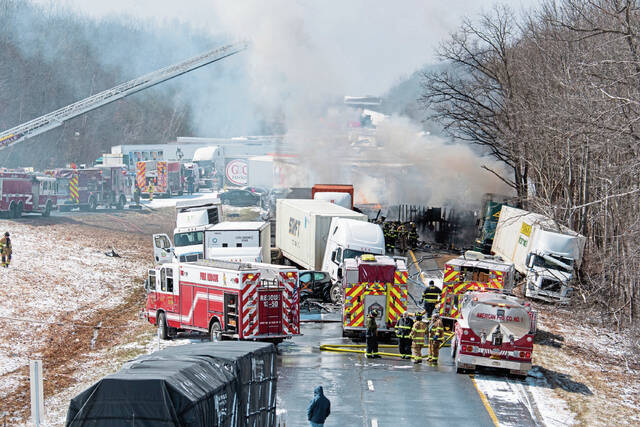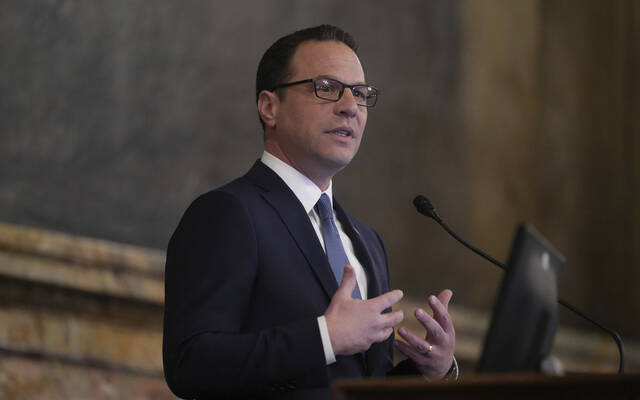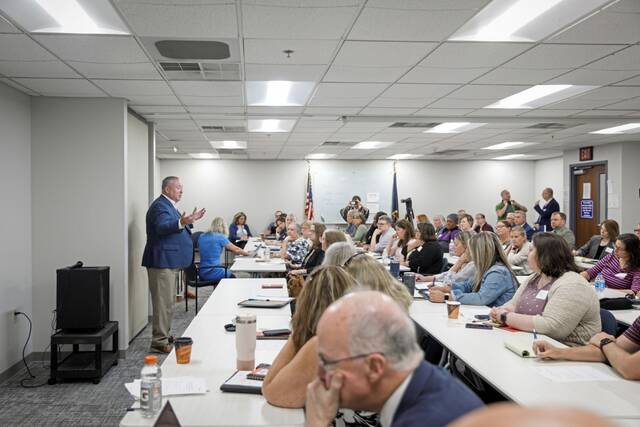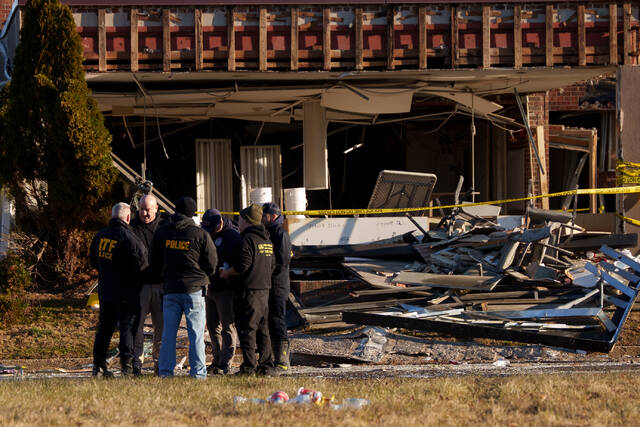The deadly, snow squall-induced pileup on Interstate 81 on Monday, which resulted in six confirmed deaths and an additional 24 people injured, ranks among the worst accidents of its kind in Pennsylvania since the start of the century.
The 80-vehicle accident occurred around 10:35 a.m. in the northbound lanes of the road just south of the Minersville exit, Exit 116.
For comparison, one pileup in December 2001, which occurred on I-80 in Clinton County, involved 56 vehicles and six confirmed fatalities, according to PennDOT. Another accident in January 2004, on the same interstate, occurred in Centre County and involved 42 vehicles and six fatalities.
Yet another pileup on I-80 in December 2019 in Union County involved 59 vehicles and two fatalities.
A tour bus crash on the Pennsylvania Turnpike in Westmoreland County in January 2020 killed five people and injured 60. That crash also involved three tractor trailers and a vehicle.
Related:
• NTSB: Speed, road conditions played big role in fatal Mt. Pleasant turnpike crash• 5 dead in Pennsylvania Turnpike crash in Mt. Pleasant Twp.
State police said the 24 injured in Monday’s crash were taken to four area hospitals. Thirteen of those people were treated at Lehigh Valley Health Schuylkill, according to M. Michael Peckman, director of public affairs and marketing.
“Ten of them were treated and discharged,” from the emergency room, he said.
The other three patients have since been transported to Lehigh Valley Hospital-Cedar Crest, Allentown. Peckman did not know the severity of any patient’s injuries, nor the status of those still in the hospital.
Undetected on radar
Snow squalls are often the primary cause of pileups in Pennsylvania, said Michael Colbert, a meteorologist with the National Weather Service. He said the squall that resulted in Monday’s accident occurred suddenly and with little warning.
The agency could not warn travelers of the impending squall, he said, because radar beams had been unable to detect conditions in Schuylkill County, a notoriously difficult area for radar coverage.
Colbert said snow squalls are “very low-level” phenomena that occur closer to the earth. Because of the curvature of the earth, they are more difficult to detect than thunderstorms and other weather events higher in the atmosphere.
“Unfortunately, not every snow squall can be detected,” he said. “Sometimes, it doesn’t take the heaviest snow ever to produce a high-impact accident like we saw on Monday.”
Following the accident, the National Weather Service issued a special weather statement warning motorists of further squalls that would “quickly reduce the visibility to under one-half of a mile and coat the roads with snow.”
Colbert said motorists should “play it safe” if they see any reports of snow squalls on the forecast. Even if they don’t receive emergency alerts, motorists should delay travel for as long as possible or until conditions have improved.
“The main takeaway from this is that we are still in the process of educating the public about what a snow squall is,” Colbert said. He added that the National Weather Service is in the process of increasing educational outreach on the phenomena.
“Snow squalls are probably one of the worst weather hazards that Pennsylvania has, period,” he said.
Road reopened
Following the pileup, the section of I-81 near the crash site has reopened and appears to be in good condition.
Exits 107 to 119 of the interstate were closed after the accident, said Ronald Young, a spokesman for PennDOT’s District 5. The road reopened at 12:30 a.m. Wednesday, about 38 hours after the crash.
Young said road crews on Tuesday night milled “a few hundred” feet of the road near Exit 116 where damage was most significant.
“There was some concern due to the fire, heat and some of the liquids that spilled onto the surface, like fuel and oil, that they could’ve gotten into the top layer of the asphalt,” he said.
Although PennDOT, along with emergency medical services, towing companies and other crews, had cleared all hazardous substances and debris from the road, the agency decided to repave the section of the highway, he said. A contractor has been hired to do the repaving job, although a time frame for the project has not been determined.
“The plan is to get that pavement back into normal shape,” Young said, “and hopefully, nothing like this happens again.”
Young praised the crews for responding to the situation in a timely manner and preparing the road for reopening.
“It was very much a team effort out there by a number of agencies and people,” he said. “The community really stepped up, and we’re thankful for that.”








